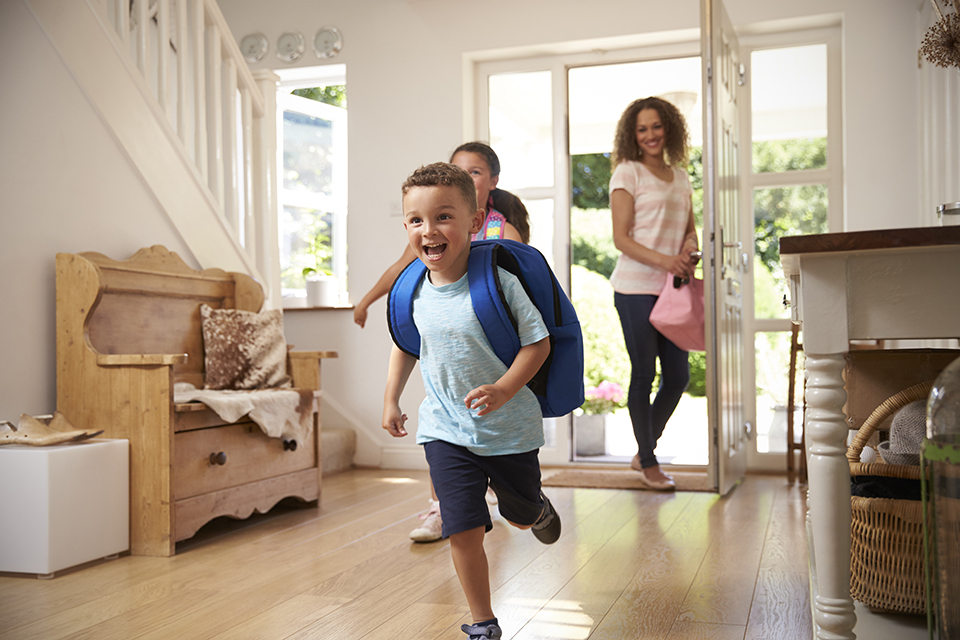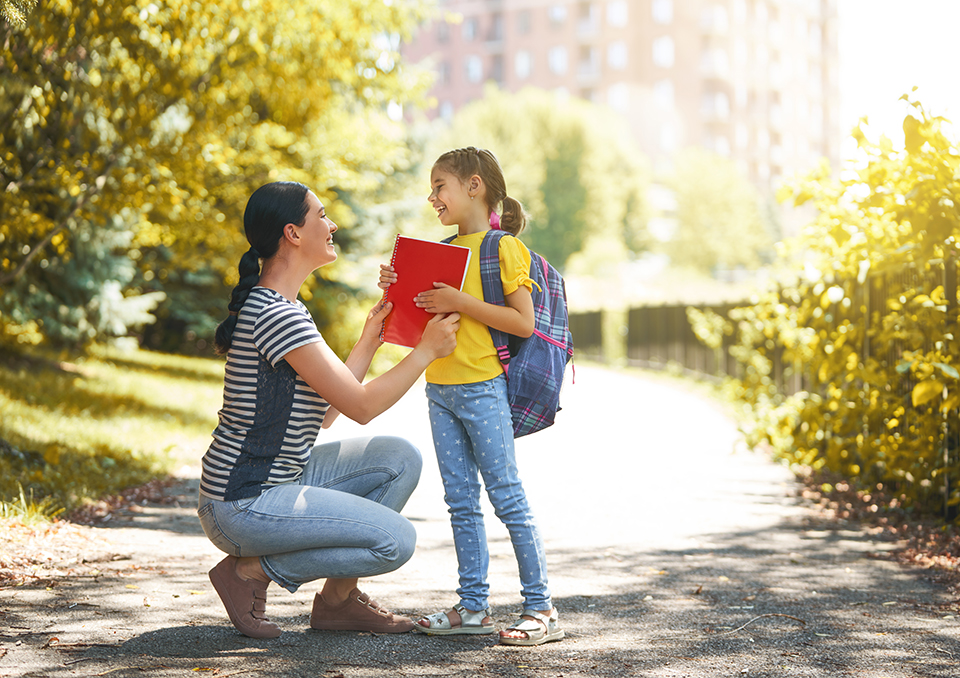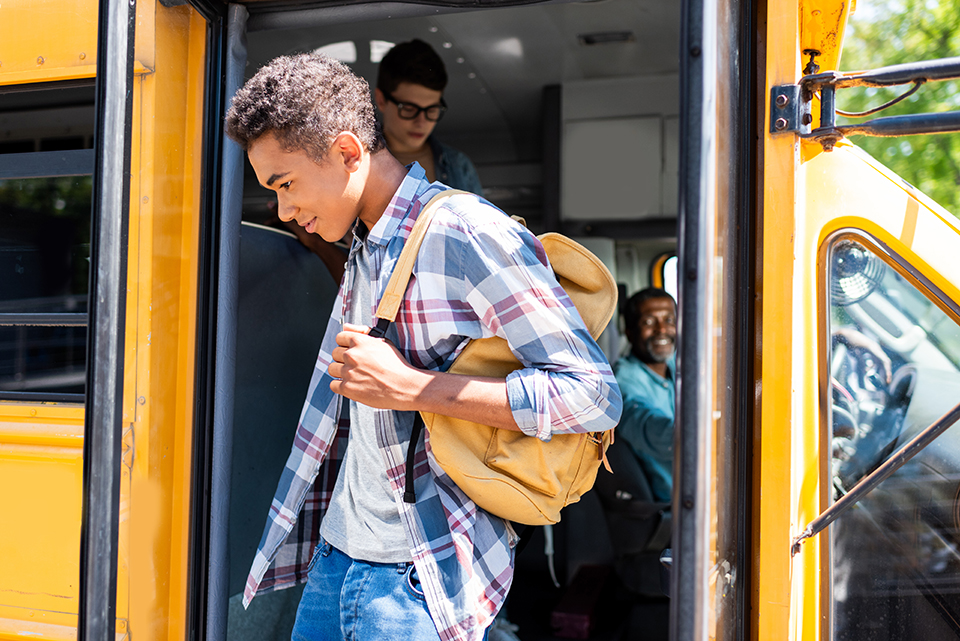Preparing for school is a year-round endeavor. Securing the school supplies, ensuring your kids have the right clothes, and getting a head start on the yearly calendar are just a few of the to-do list items that are likely part of your regular planning.
Still, back-to-school time often signals a fresh new start. Whether you’re in a new home or your child is off to a new school, transitions can be difficult. Keeping up with the things to buy outside of the yearly supplies list also broadens when your student heads to college, a new school, or advances to needing things like a graphing calculator.
We’ve put together the ultimate back-to-school guide because, as parents, we at Patten Title know that from preschool through college, it helps to start off the school year on the right foot. You’ll find tips to fill your kids’ bookbags, help with transitions to a new school, make sure you make the most of the last breath of summer, and prep your home for the start of a new school year.
8 Tips for Back-To-School Shopping
1. Shop for School Supplies on Sale
A few things will be on the school list every year: pencils, pens, notebooks, coloring pencils, crayons, markers, scissors, folders, and glue. Keep an eye on the circulars at your local stores or even shop Amazon’s lightning deals for sales on supplies. You can also consider buying in bulk from a dollar store or discount center.
Be aware that some schools expect kids to have some supplies at home, too, so you’ll never go wrong with extra boxes of crayons, colored pencils, No. 2 pencils, glue, or paste.
2. Secure a Favorite Alarm Clock
The transition from carefree summer days and sleeping into rigid school schedules can be a system shock for kids (especially teenagers). It’s best to start preparing kids for the early morning hours about two weeks before the school rush starts.
Establish a bed and wake-up time that aligns a little closer to when they’ll have to be ready during school days. The amount of sleep they need each night varies based on how old your child is. Preschoolers need 10-13 hours of sleep each night, while teens can survive on eight to 10. Make it easier for them by buying the right alarm clock.
3. Let Your Kids Select Their Own Backpack
Not only do interests change, but kids’ needs change as they grow through school. A dinosaur or unicorn backpack that was favored in kindergarten might not be cool by fourth grade. They’ll also probably need a slot for a laptop or tablet, plus heavier books as they get older.
Younger kids need smaller, durable packs, while you can splurge on bigger sizes as your students age. For middle school, high school, and college students, consider a brand like Columbia or JanSport that has a lifetime guarantee.
4. Make Sure Headphones are Comfortable
Many schools put headphones on the school supply list, and you don’t want to find out you spent money on something that your first grader says “hurts.” Get their opinion and let them try out a pair before you send them to school.
Some schools don’t allow headphones for students outside of computer class, but kids certainly use them to study at home and in places in school where they are allowed. At home and in a dorm room, noise-canceling headphones are a must if students are trying to study around siblings or roommates.
5. Invest in an Effective Labeling System
The lost-and-found table of any school at the end of the year is a smorgasbord of missing items. The best way to make sure that your family belongings aren’t headed for the void of lost things is to find labels that work for you.
The right system for you will depend on the age of your student. Preschoolers love labels with logos (these also help them recognize their own items before they can recognize their names), but a cat picture on your high schooler’s sports gear doesn’t pass the same “cool” test.
Great labels come in stickers (that are perfect for clothes, school items and shoes) and stamps that don’t come off in the wash.
6. Promote Conservation with a Good Lunch Box
Lunch boxes and bags aren’t just for school anymore. Adults who travel to offices are making the most of reusable lunch containers to reduce their carbon footprints.
Like bookbags, kids’ interests in style and color, plus food choices, will change. When buying a lunch box or bag, consider what will go in it each day. Will your high schooler be taking a salad, microwaving soup at school, or need something that holds a Bento box? Also, if you use reusable containers to hold the food, practice with your preschooler and kindergartener to know that they can open them before you send them to school.
7. Pick the Most Durable Clothes
Back-to-school shopping might not be a hassle if your school requires a uniform. Still, make sure that you’re abiding by the school’s rules for extras like sweaters, khaki pants, or even socks and shoes before investing for the year.
When your kids don’t have uniform restrictions, watch for the best deals to pop up in the middle of the summer (sometimes as early as July Fourth). Still, you don’t want to buy too early that they’ll grow out of new shoes or too late that the selection is minimized.
8. Remember the Sales Tax Holiday
Texas shoppers can enjoy a Sales Tax Holiday each year in August, perfect for last-minute shopping. The holiday eliminates the sales tax on typical items purchased for school, like clothes, backpacks, supplies and more. The great news is that you can apply it to online sales, too.
7 Ways to Enjoy the Summer Before School Starts
Whether you’ve moved to a new school district or your child is transitioning from middle to high school, these changes are hard. You can make life easier for the whole family with these tips.
1. Backyard Camping
Pitching a tent in the backyard is perfect for kids of all ages. The best part about backyard camping is that it can be done with just the family or you can invite over friends for a party.
Stock up on snacks, help the kids learn the nuances of setting up a tent, and, if the kids are old enough, parents can relax and enjoy the evening from the living room. The night can either be super casual, or you can plan games, make a campfire and plan an elaborate dinner and breakfast.
2. Visit the Zoo
Zoo animals never disappoint, and Texas is filled with fun zoo destinations and animal safaris. If you’ve seen your local zoo more times than you can count, take a road trip to try a new location.
3. Enjoy the Value of Locally Grown Food
A Farmer’s Market is one link in the local food chain and is an excellent tool for building a connection with food. Kids of all ages can learn the importance of supporting local farmers, and making meals with the food gathered at the market sets the stage to make them healthier eaters.
4. Try a New Museum
Did you know that Texas is home to more than 1,000 local museums? If your kids can spout the history of their own town by heart, take a trip to try a new science museum, art center, or art park to enjoy the winding days of summer.
5. Hit the Beach or Waterpark
Nothing beats a hot summer day like water. Enjoy a family day at the beach, waterpark, or a local watering hole. Playing in the sun and the water can also help build in exercise or relaxation.
6. Set a Date with Friends
If your kids are home from college, they’ll love to meet up with their high school friends before starting a new semester. If your kids are younger, a summer playdate is a great way to reconnect with classmates before the new year begins. If you’ve moved to a new neighborhood or city, connect on social media with parents of kids your child’s age to set a playdate in the park before starting in a new school.
7. Make a Book of Summer Fun
If you created a bucket list when the summer began, the whole family can help write the story of their favorite moments and memories. You can store the memories in a scrapbook, highlight the photos using Shutterfly, or publish your book as a keepsake through a site like Blurb.
7 Tips to Prepare Your Child for School Transitions
Whether you’ve moved to a new school district or your child is transitioning from middle to high school, these changes are hard. You can make life easier for the whole family with these tips.
1. Talk About Their Worries
Moving to a new school can be emotionally and socially jarring for kids of all ages. Acknowledge their fears about trying something new and normalize them. Help them problem-solve their fears and talk about what specifically they’re concerned about. You can also help by role-playing through some worries so they feel confident in each situation.
2. Explore the New School
No matter why your kids are making the switch, make sure they’re familiar with their new surroundings. Take this opportunity to do as much as you can to prepare them for the transition. This starts with a trip to the new location. If you can, introduce them to teachers, school administrators and other students before the first day. School open houses are a great place to do so. You’ll also want to prepare them with information about the new routine to let them know how they’ll get to school and how they’ll get home. If they ride the bus, find out their bus number and where they should get on and off.
3. Get Involved
Schools are always looking for parent volunteers. Talk to administrators to find out if your child’s teacher needs a room parent or how you can join the PTA. Your involvement creates an opportunity to meet other parents and form relationships with other families. Your child may feel more comfortable if they know you are around.
4. Understand Change Doesn’t Happen in a Day
There will be ups and downs for any child when moving to a different school. Even if you’re halfway through the school year, memories of the old school or new anxieties might pop up. Pay attention to new patterns and talk to your child’s teacher about possibilities for new-found stress.
5. Emphasize Good Rest
It’s amazing how a good night’s sleep can make or break a day for anyone, children included. Kids with school anxiety may be losing sleep. Create a consistent routine before school starts to make sure that sleep is important for the whole family.
6. Avoid Too Many Re-Visits
If your child is transitioning to a new school because you’ve moved to a new state or neighborhood, try to avoid trips to see their old friends for the first few months. Let your family start a new routine and be comfortable before the emotional pull of old buddies takes your kids back to their “old life.”
7. Spend Extra Time with Your Child
Make extra family time during transitions. This may give your kids an opportunity to open up more than they do when you talk right after school. Your availability as a parent and letting them know you will be an active listener when they talk is a huge step for adolescents. When your kids are elementary-aged, set time aside to play one-on-one.
6 Ways to Convert Your Home from Summer Fun to School Year Order
If there are still mismatched flip-flops all over your house and beach toys piled in one corner, your home is probably ready to make the switch away from summer fun and toward the comfort of school year order. These seven tips will help you organize your house while maintaining good summer memories.
1. Create Study Spaces
Make sure that each student has a designated study space. Each space could look different based on your child’s age and needs. It could be a desk with a chair that is clearly marked as theirs or a writing table at their height. Creating an organized workspace, even if it’s just a chair and a table, is important for kids to know where homework can be done when they get home.
2. Develop Your Home’s Communication Central
Think about how your family communicates and how you can keep a schedule that everyone knows how to access. It may be as simple as a white or blackboard and a corkboard to help smooth out the chaotic days for families with multiple kids. You may use the cloud or other technology to send reminders about daily events.
3. Open Space on Shelves & Bookcases
Are your bookcases filled with summer reads and books you “meant to get to”? Organize the space to make sure that everyone has a place to find any at-home books that will be needed during the school year (this is especially true if you have a college student commuting from home). If your young children’s book collection looks sparse, visit library book sales to fill up reading nooks.
4. Find a Spot for Supplies
Make sure that everyone in the family knows where to find extra pencils, crayons, art supplies, binders and more. If you’ve stocked up for the year, you’ll also want to keep extra band-aids, hand sanitizer, and maybe even hard candy for rewards after a hard afternoon of homework.
5. Organize a Breakfast Nook
Was summertime breakfast a free-for-all of sugary cereal if they were up in time for breakfast at all? Kids who go to school after a healthy breakfast are less irritable and more alert than kids who are hungry. Set a space where kids will eat breakfast each morning and talk to them about what they’d like to eat. If your teens would rather get that extra 15 minutes of sleep, consider grab-and-go options like smoothies, egg burritos or homemade muffins.
6. Arrange a School-Ready Entryway
Coats, hats and shoes will always land at the house entrance. Do you have space to create at-home lockers or to give your kids their own space to hang coats and bags? Consider installing shelves or heavy-duty hangers so that everyone can easily grab the right supplies as they leave the house in the morning.






